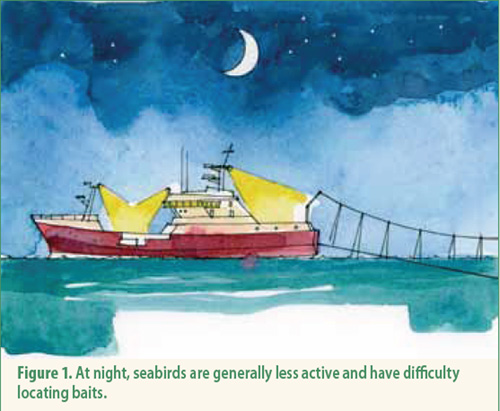ACAP’s Executive Secretary, Warren Papworth and Science Officer, Wiesława Misiak attended the Thirty-second Meetings of the Commission for the Conservation of Antarctic Marine Living Resources (CCAMLR) and its Scientific Committee held in Hobart, Tasmania last month.
In its interventions to the meetings ACAP noted that the incidental bycatch of albatrosses and petrels in adjacent fisheries north of the CCAMLR region has been an item of concern to the CCAMLR Commission for some years.
ACAP’s Executive Secretary advised that substantial progress has been made by the tuna Regional Fisheries Management Organizations (tRFMOs) managing fisheries adjacent to the CCAMLR Convention area, with these Commissions having adopted seabird conservation measures requiring use of two of the three mitigation measures recommended by ACAP for pelagic longline fisheries.
In three tRFMOs (ICCAT, IOTC and WCPFC), mandatory seabird conservation measures have been adopted requiring use of two of the three mitigation measures (line weighting, use of bird-scaring lines and night setting) recommended by ACAP for pelagic longline fisheries. The CCSBT requires its fishers to comply with the seabird conservation measures of ICCAT, IOTC and WCPFC, although currently this is a recommendation only and is not binding on them.

The support of ACAP Parties as well as CCAMLR Members was essential in achieving this success. The Executive Secretary noted also that ACAP’s work in the tRFMOs has been supported for a number of years now by voluntary contributions from the Government of France, which has enabled this work to proceed.
The adoption of these conservation measures provides an effective framework with which to prevent the incidental mortality of CCAMLR seabirds in adjacent fisheries. This is a significant step towards ensuring the long-term survival of many populations of albatrosses and petrels. The challenge now is to achieve the implementation of the conservation measures and this will be the focus of ACAP’s work in coming years.
The use of electronic monitoring is regarded by ACAP as an effective means for facilitating compliance with these conservation measures and the support of CCAMLR Members in ensuring the adoption of this technology in the relevant tRFMOs was sought.
Warren Papworth, Executive Secretary & Wiesława Misiak, Science Officer, ACAP Secretariat, Hobart, Tasmania, Australia, 05 November 2013

 English
English  Français
Français  Español
Español